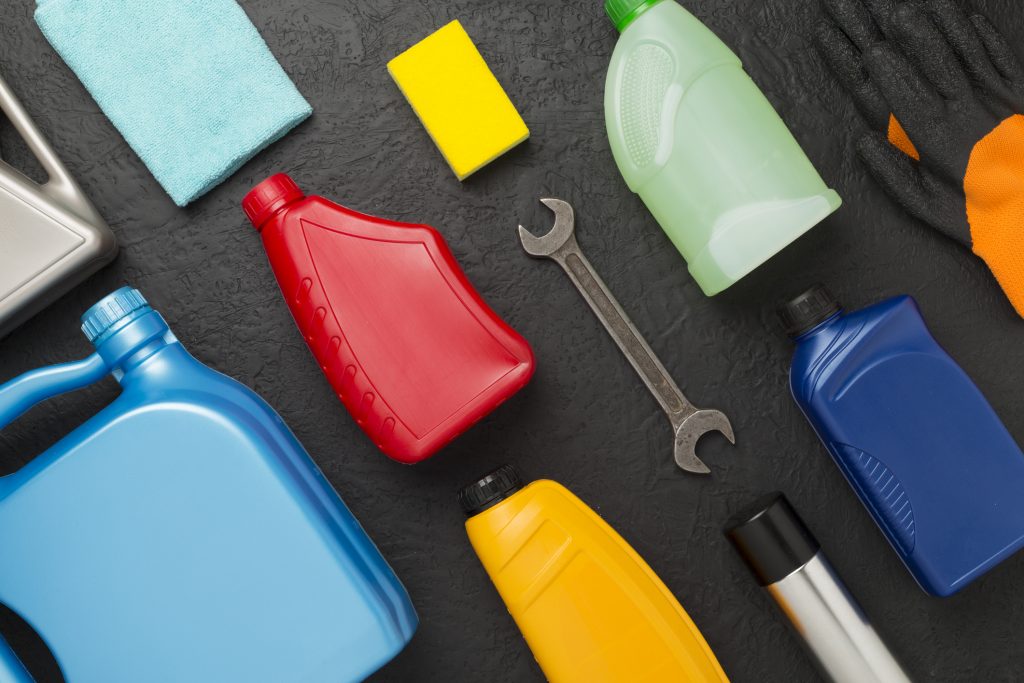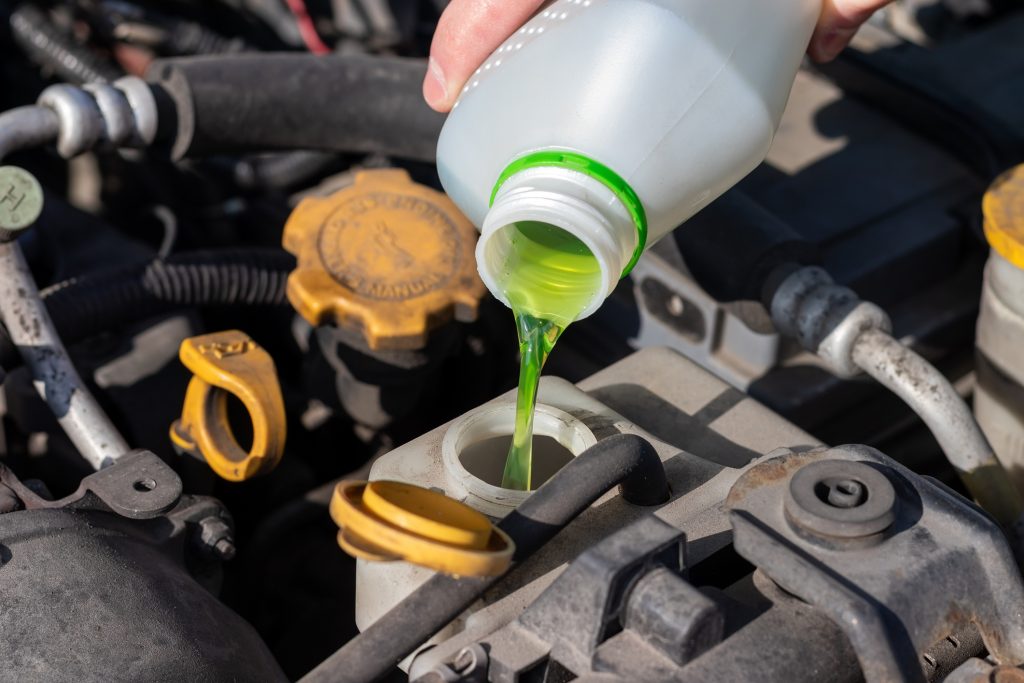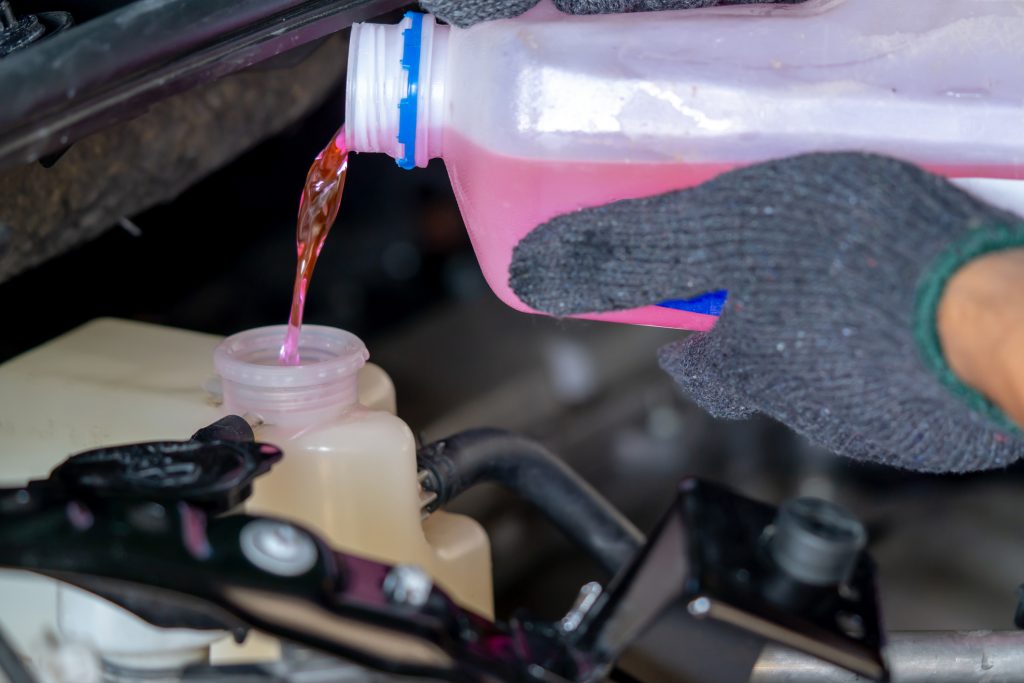With so many engine coolant types available, it’s important to understand which option is best for your car. The right choice depends on your vehicle’s age and the manufacturer’s recommendations. Broadly, there are two main coolant types you’ll come across: Inorganic Additive Technology (IAT) and Organic Acid Technology (OAT).
Picking the correct coolant is key to protecting your engine, especially as different generations of vehicles require different formulas. This guide explains the different types of coolant available and how to pick the one that is most suitable for your car.

What is engine coolant and why does it matter?
Coolant, sometimes called antifreeze mixture, is the liquid that circulates through your engine to manage temperature. Without it, your car’s engine would quickly overheat or corrode, leading to expensive repairs.
How coolant works in your engine
- Heat transfer: Carries heat away from the engine block to the radiator.
- Freeze protection: Ensures fluid won’t solidify in sub-zero temperatures.
- Corrosion prevention: Inhibitors in coolant protect metal components and seals.
Why choosing the right coolant is essential
Coolants aren’t all the same. Each formula is designed to protect different materials and systems. Using the wrong type may reduce corrosion protection, form sludge, or cause coolant leaks. If a leak does occur, products such as K-Seal can help seal the problem before it becomes serious.
- K-Seal — a versatile fix for most cars.
- K-Seal Ultimate — a stronger formula for more stubborn leaks.
- K-Seal HD — heavy-duty formula for larger vehicles and tough conditions.
What are different coolant types? Understanding IAT and OAT coolants
When figuring out which engine coolant suits your car, you’ll usually be choosing between two main types: IAT and OAT. You should always consult your vehicle manual if you’re unsure which type you need.
What is IAT coolant?
Inorganic Additive Technology (IAT) coolant is usually green or blue. It was the industry standard for decades and is typically used in older vehicles (pre-2000s). Its corrosion protection works immediately but fades faster, which is why it needs replacing more often — usually every two years or ~30,000 miles.
What is OAT coolant?
Organic Acid Technology (OAT) coolant is typically orange, red, or pink. It’s made for modern cars and lasts longer — often up to five years or ~150,000 miles. Its corrosion inhibitors work gradually but provide lasting protection for aluminium and other materials common in newer engines.
Key differences between IAT and OAT coolant
| Feature | IAT coolant | OAT coolant |
| Typical colors | Green or blue | Orange, red, or pink |
| Vehicle era | Older cars (pre-2000s) | Modern cars (2000s onwards) |
| Additive chemistry | Silicates & phosphates | Organic acids |
| Lifespan | ~Two years / ≈30,000 miles | ~Five years / ≈150,000 miles |
| Corrosion protection | Fast-acting, but wears down quicker | Long-lasting, gradual release |
Coolant colors: What they mean and why they matter
Drivers often wonder how to identify the right coolant color for their car. While color often reflects the formula, it isn’t a guaranteed guide. Always confirm by checking your handbook or manufacturer’s specification.
Green and blue coolants
Most often IAT, used in older and classic cars.

Orange, red, and pink coolants
Typically OAT, used in newer cars for longer-lasting protection.

Yellow or hybrid color coolants
Sometimes Hybrid Organic Acid Technology (HOAT), a blend of IAT and OAT. While worth noting, most drivers only need to focus on IAT or OAT. You’d choose HOAT instead of OAT or IAT when you need both fast corrosion protection and long service life, especially for modern aluminum engines, mixed fleets, or when it’s specified by manufacturers like Chrysler or Mopar.
What is waterless coolant?
Waterless coolant is a modern alternative to traditional water-based coolants. By removing water entirely, it prevents common issues such as vapor formation, high pressure, and corrosion. Its higher boiling point and lower freezing point create a much wider and safer operating temperature range, so it stays in liquid form even under extreme heat or cold.
This type of coolant is especially useful for vehicles exposed to extreme conditions, classic cars and engines that are stored for long periods. It offers lasting protection and stability without the need for regular replacement, helping to save time, money and wear on the engine.
Be aware that if you switch from a traditional coolant to a waterless one, you must completely remove all water from the system before filling it.
Choosing the right coolant type for your car
When deciding what type of coolant your car requires, compatibility is more important than color alone.
Best coolant for older cars
If your vehicle was built before the 2000s, IAT coolant is usually safest. Always confirm in the owner’s manual.
Best coolant for newer cars
For most modern vehicles, OAT is the standard choice, designed to last longer and suit the materials used in newer engines.
Why you shouldn’t mix coolant types
Combining IAT and OAT can cause chemical reactions that reduce performance and may damage the system. If you’re switching types, always flush the cooling system first.
FAQs about engine coolant types
How do I find out which coolant my car needs?
Check your owner’s manual or use an online registration lookup tool to see the specification your manufacturer recommends.
Is engine coolant universal?
Not quite. While some coolants are marketed as universal, they may not deliver the best protection for every engine type. Always check compatibility and understand the difference between coolant and antifreeze.
How often should coolant be changed?
IAT usually lasts around two years, while OAT can extend up to five years. Regular checks of coolant level and condition are important to ensure that your vehicle runs smoothly.
Can K-Seal work with all coolant types?
Yes. K-Seal, K-Seal Ultimate, and K-Seal HD are designed to work safely with IAT, OAT, and HOAT formulations, depending on the type of coolant your car requires.
K-Seal products are also compatible with waterless coolants, such as Evans Coolant, which use a non-aqueous formula to eliminate corrosion and overheating issues common in traditional water-based systems.